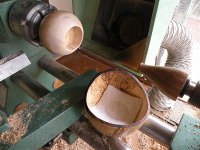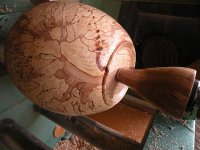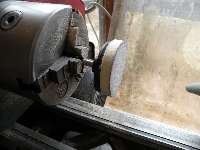Walter Hall
Established Member
cornucopia":3iku1c83 said:Bodrighy":3iku1c83 said:cornucopia":3iku1c83 said:imo- it’s nothing to do with snobbery it’s all to do with your own pride and the care taken to do justice to the wood etc- you will never obtain the same fine finish on a chuck recess as you will on the rest of the piece due to not being able to sand & finish it to the extent of the rest of the piece and you also may or may not get some marks from the jaws. you should finish every piece of your work to the very best of your ability especially if you are selling it as you are representing not only yourself but the woodturning community.
now don’t get me wrong make what pleases you and do it how you want to- but unfortunately if our hobby is ever going to lift itself out of the cheap craft stereotype it’s got..... the level of detail in allot of "craft fair work" must change.... as some (not all) seem to have this "it’ll do" attitude
I agree totally with everything you say except the 'nothing to do with snobbery' part George. I have met a few turners who feel that any evidence of how the piece was held is a sign of bad workmanship and I can't go along with that. Spigots can be cut back and made decorative as can recesses. I think that on the type of work that you do , boxes, hollow forms etc, a spigot or a recess would detract and ideally should be removed but on bowls, platters etc they can be a part of the design. Any piece that can be held over the bed with the tailstock can be reversed and refined with no extra cost other than a scrap board turned to size and some foam so the need for fancy jaws etc is only necessary for out board turned work.
Pete
well all i can say then Pete is that there is no snobbery on my part
I agree with you George that it is not to do with snobbery, and I agree with you too that we should all endeavour to finish our work to the highest standard we are capable of achieving. However I also agree with Bodrighy when he says that there are some who feel that any evidence of how the piece was held is a sign of bad workmanship. I do not think this kind of thinking is snobbery, but it is pedantic and unnecessary. A platter or bowl with a well finished and/or decorated recess or spigot can be just as well made and attractive as one where they are removed. I often rework and decorate the recess as part of the design and this requires more thought and work than removing it altogether
The problem also manifests itself in competitions and the like where judges will disqualify or mark down a piece for reasons of pedantry rather than genuine issues of poor workmanship.







































